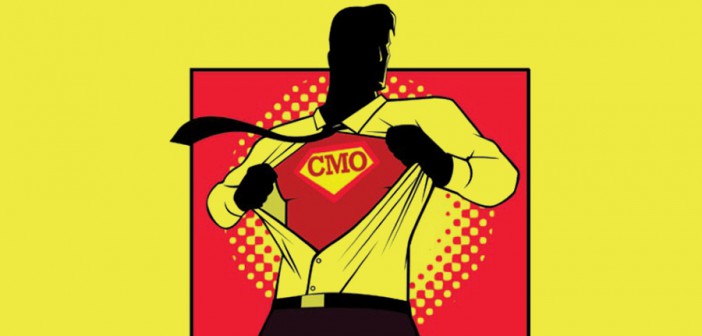As the founder of a mobile diagnostics company, the changes I have observed in the role of today’s CMO represent the most significant transformation in the C-suite in decades—and a potential catalyst for a future rethink of the traditional org structure.
Three powerful trends are driving the CMO transformation: data, access and a people-driven economy.
Data
Not too long ago, CMOs looked into their crystal balls, anticipated consumer trends and preferences and stewarded brands accordingly. Today, the CMO is becoming the de facto chief data officer. Targeted digital ads are improving ROI at the top of the sales funnel while “Big Data” unearths less-obvious correlations. Big Data is particularly helpful for CMOs to distinguish between what people say and what they do.
“Fast Data” is a recent addition to the CMO data toolkit. Social monitoring and mobile crowdsourced feedback solutions are creating instant insights and diagnostics. Properly executed, these inform every marketing decision along the customer journey, from design and communication to execution. Here the CMO pivots from broadcaster to listener.
However, a growing consequence of all these data sources is mind-numbing noise. The CMO needs superior data skills just to decide what matters. Creativity, brand stewardship and large-scale thematic campaigns will remain part of the CMO role.
Access
In a mobile world, access is the new ownership—and consumers believe they share the ownership of brands. Customers expect to be heard and empowered. Technology, while perceived to be impersonal, is the key to scaling empathy and providing effective engagement strategies. Now the CMO is moving down the sales funnel with a goal of using access to create highly engaged users and customer retention.
In a networked, all-access world, reality will eventually overtake perception. The new breed of CMO must therefore scale positive realities rather than create perceptions. This suggests an inside-out approach to marketing that ushers in a whole new genre of programs.
For example, consumers are rarely more satisfied than the employees serving them. One fascinating insight is that customers also care deeply about specific employees. In a HundredX survey conducted with Ogilvy and Mather, 86% of consumers felt companies should do more to publicly recognize their good employees. And consumers were 10% more likely to “for sure” recommend a restaurant to a friend when they had recognized an employee by name. This data all suggests that happy employees are critical to reality-based marketing, and that a target-rich opportunity for mobile-enabled innovation lies at the point of customer-employee connection.
The byproduct of access-driven, inside-out marketing is much closer coordination between CMOs and the heads of HR, operations and business units. The CMO becomes the chief connection officer. This customer-driven overlap is a clear sign that the classic organization structure may need to evolve. Indeed, many enterprise technology vendors struggle with who the purchaser is for customer-centric solutions.
People-Driven Economy
We have now entered the people-driven economy. For example, the Temkin Group estimates that small increases in customer satisfaction can translate into 37% higher revenues over three years. People are an organization’s most valued asset. Talent management is now a $50 billion annual industry, and turnover costs are estimated to exceed 20% of wage costs.
The stakes are incredibly high to get it right. Marketing is about connecting with people. While marketing spend will be reallocated, the amount overall should increase.
Each customer and employee has greater potential to help or do harm in a networked world. At the same time, the cost to connect has declined rapidly. For the first time, there is a positive net value per connected individual. This enables coordinated strategies at both the group and individual levels.
Conclusion
The reinvented CMO will operate and collaborate at the intersection of human and digital. They will use data and access to succeed in the people-driven economy.




